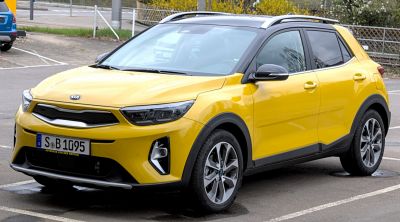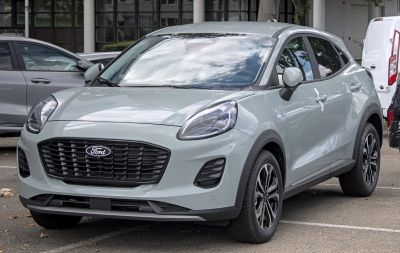 2021 Hyundai Kona I (facelift 2020) Dimensions, Size & Specs
2021 Hyundai Kona I (facelift 2020) Dimensions, Size & SpecsMeasurements of the 2021 Hyundai Kona I, engineered for optimal performance and comfort
| Dimensions | |
|---|---|
| Length: | 4205-4216 mm165.6-166.0 in13.8-13.8 ft |
| Width: | 1801 mm70.9 in5.9 ft |
| Height: | 1565-1575 mm61.6-62.0 in5.1-5.2 ft |
| Ground Clearance: | 158-170 mm6.2-6.7 in0.5-0.6 ft |
| Trunk Capacity: | 332-544 liter11.7-19.2 cu ft |
| Trunk Capacity (Max): | 1114-1297 liter39.3-45.8 cu ft |
| Weight Specifications | |
| Curb Weight: | 1265-1685 kg2789-3715 lbs |
| Maximal permitted Weight: | 1795-2170 kg3957-4784 lbs |
| Roof Load: | 80 kg176 lbs |
| Tire Specifications | |
| Rims Sizes: | 17-inch rims:
|
| Tire Sizes: |
|
The Hyundai Kona I facelift (2020) generation was produced from 2021 through 2023, presenting a refined compact SUV option in Hyundai's lineup. This model offers versatility and style with updated features while maintaining the practical dimensions characteristic of the Kona. The length of the vehicle ranges between 4205 mm to 4216 mm (165.55 to 165.98 inches), making it a comfortably sized compact SUV ideal for urban driving and small family use. The width spans roughly 1800 to 1801 mm (70.87 to 70.91 inches), providing a stable stance and sufficient cabin space, while height varies from 1565 to 1575 mm (61.61 to 62.01 inches), ensuring an elevated driving position typical of SUVs. Curb weight of the Kona I facelift spans from 1265 kg to 1685 kg (2790 to 3715 lbs) depending on configuration, with a maximum permissible weight between 1795 kg and 2170 kg (3956 to 4784 lbs), supporting a range of passenger and cargo combinations. Luggage capacity is highly adaptable, with 332 to 544 liters (11.72 to 19.21 cubic feet) available with seats upright, expanding significantly to between 1114 and 1297 liters (39.34 to 45.79 cubic feet) when rear seats are folded down, making it competent for road trips or utilitarian needs. The Kona rides on various rim sizes, including 16, 17, 18, and 19 inches with tire size options like 205/60 R16, 215/55 R17, 235/45 R18, and 235/40 R19, allowing for customization in aesthetics and handling dynamics. Ground clearance ranges from 158 mm to 170 mm (6.22 to 6.69 inches), beneficial for tackling rough roads or mild off-road conditions while maintaining SUV practicality. Its roof load capacity is rated at 80 kg (176 lbs), suitable for extra cargo such as roof boxes or sports equipment. Overall, the Hyundai Kona I facelift from 2021 to 2023 is a dynamic, well-sized compact SUV that balances city driving convenience with versatile cargo capabilities.
Discover the standout features that make the 2021 Hyundai Kona I a leader in its class
Have a question? Please check our knowledgebase first.
The Hyundai Kona I facelift, produced from 2021 to 2023, has exterior dimensions that range slightly depending on variant. Its length varies between 4205 mm and 4216 mm (approximately 165.6 to 166.0 inches). The width is nearly fixed around 1800 to 1801 mm (70.9 to 70.9 inches). The height ranges from 1565 to 1575 mm (61.6 to 62.0 inches). These dimensions place the Kona I facelift firmly in the compact SUV segment, making it manageable in urban environments while still offering comfortable interior space.
The curb weight of the Hyundai Kona I facelift (2020) spans from 1265 kg to 1685 kg (approximately 2789 to 3716 pounds), depending on specific trims, drivetrain, and equipment levels. The maximum gross vehicle weight ranges between 1795 kg and 2170 kg (around 3957 to 4784 pounds), which accounts for passengers, cargo, and fuel. This range reflects flexibility in load capacity while accommodating various configurations including different powertrains and optional features.
The Hyundai Kona I facelift offers versatile cargo space to suit everyday needs. With the rear seats in place, luggage capacity ranges from 332 liters to 544 liters (approximately 11.7 to 19.2 cubic feet), depending on the specific model and configuration. When the rear seats are folded down, the available luggage volume expands significantly, ranging from 1114 liters to 1297 liters (around 39.3 to 45.8 cubic feet). This flexibility makes the Kona practical for carrying larger items or increased cargo loads during trips.
The Hyundai Kona I facelift SUV model provides a ground clearance of between 158 mm and 170 mm (approximately 6.2 to 6.7 inches), which offers a good balance between agility on city roads and the ability to handle mild off-road or uneven surfaces comfortably. The roof load rating is set at 80 kg (about 176 pounds), allowing you to safely carry roof-mounted cargo such as roof boxes, bikes, or sports equipment, enhancing the vehicle's versatility for active lifestyles.
Yes, the Hyundai Kona I facelift fits comfortably within standard garage dimensions. With a maximum length of 4216 mm (166 inches or 13.8 feet), width around 1801 mm (70.9 inches or 5.9 feet), and height up to 1575 mm (62 inches or 5.2 feet), it is compact enough to easily park in average residential garages, which typically measure approximately 2.4 to 3 meters wide (8 to 10 feet) and 5.5 to 6 meters deep (18 to 20 feet). Sufficient maneuvering space will depend on the garage layout but overall, the Kona is well-suited to standard residential parking settings.
Compared to the original Hyundai Kona (pre-facelift), the Kona I facelift (2020) maintains very similar external dimensions, with only slight variations depending on trim and equipment. The length remains around 4205 to 4216 mm (165.6 to 166.0 inches), width near 1800 mm (70.9 inches), and height close to 1565-1575 mm (61.6-62.0 inches). These minimal changes mean that the facelift focused more on cosmetic updates and technology rather than altering the fundamental size or footprint of the vehicle. The luggage capacities and ground clearances are similarly aligned, preserving the compact SUV’s practicality and maneuverability.
The Hyundai Kona I facelift's dimensions are competitive within the compact SUV segment. Its length of roughly 4.2 meters (13.8 feet) and width just over 1.8 meters (5.9 feet) are comparable to rivals such as the Nissan Juke, Mazda CX-3, and Honda HR-V. The ground clearance of up to 170 mm (6.7 inches) is also typical for urban SUVs aimed at a mixture of city driving and light off-road use. Its luggage space, especially with seats folded (over 1100 liters / 39 cubic feet), ranks well in its category, offering practical cargo flexibility. Overall, the Kona I facelift balances compact exterior proportions with efficient interior utility.
The Hyundai Kona I facelift offers a wide range of wheel options suited to different driving preferences and trim levels. Rim sizes include 7J x 17 inches, 6.5J x 16 inches, 7.0J x 17 inches, 7.5J x 18 inches, and 19 inches in diameter, providing a choice between sportier looks and comfort-oriented setups. Correspondingly, tire sizes vary widely, including 215/55 R17, 205/60 R16 92H, 215/55 R17 94V, 205/60 R16, 235/45 R18, 235/40 R19, and 225/45 R18. These options enable customization based on ride quality or aesthetics, with larger rims typically offering enhanced handling characteristics while smaller rims maximize ride comfort.
The 2020 facelift of the Hyundai Kona I brought a freshened exterior design with updated front and rear styling, including redesigned headlights, tail lamps, and grille enhancements that provide a more modern and dynamic appearance. There were also interior upgrades in materials quality and technology features, such as improved infotainment systems and advanced driver assistance options. Mechanically, the facelift maintained the original platform and powertrain options but refined tuning for better efficiency and drive comfort. Overall, the facelift improved the vehicle's appeal without major structural changes.
The Hyundai Kona I facelift has a ride height (ground clearance) of 158 to 170 mm (6.2 to 6.7 inches), making it well-suited for urban conditions that may include uneven pavements, potholes, and minor off-road paths such as gravel or dirt roads. This clearance helps prevent the undercarriage from scraping while maintaining good vehicle stability and handling. It strikes a balance allowing for confident city and suburban driving as well as capability for light adventure or outdoor activities without the bulk of larger SUVs.
Discover similar sized cars.

| Production: | 2024-2025 |
|---|---|
| Model Year: | 2020 |
| Length: | 4140 mm163.0 in |
| Width: | 2025 mm79.7 in |
| Height: | 1520 mm59.8 in |

| Production: | 2017-2020 |
|---|---|
| Model Year: | 2017 |
| Length: | 4140 mm163.0 in |
| Width: | 2025 mm79.7 in |
| Height: | 1520 mm59.8 in |

| Model Year: | 2024 |
|---|---|
| Length: | 4186-4226 mm164.8-166.4 in |
| Width: | 1930 mm76.0 in |
| Height: | 1533-1555 mm60.4-61.2 in |

| Production: | 2019-2024 |
|---|---|
| Model Year: | 2020 |
| Length: | 4186-4226 mm164.8-166.4 in |
| Width: | 1930 mm76.0 in |
| Height: | 1520-1550 mm59.8-61.0 in |

| Production: | 2014-2017 |
|---|---|
| Model Year: | 2014 |
| Length: | 4157 mm163.7 in |
| Width: | 1946 mm76.6 in |
| Height: | 1490 mm58.7 in |

| Production: | 2024-present |
|---|---|
| Model Year: | 2025 |
| Length: | 4187 mm164.8 in |
| Width: | 1779 mm70.0 in |
| Height: | 1557 mm61.3 in |
